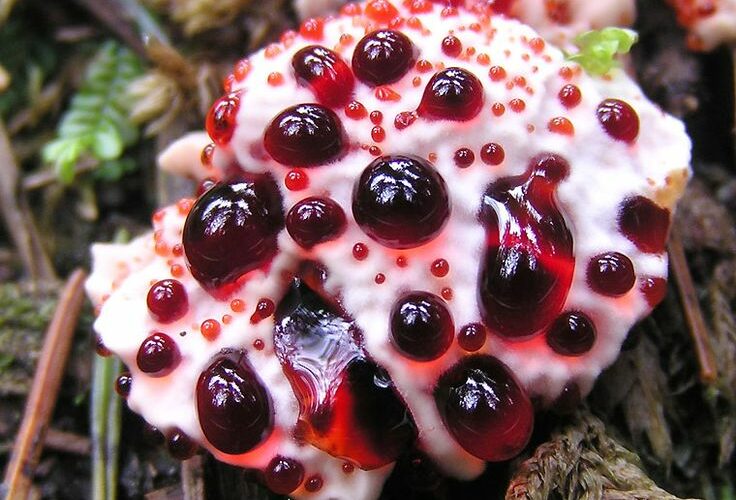Amidst the bushy bush and beneath the forest canopy lies a world where organisms with peculiar shapes, colors, and behaviors thrive – the world of mushrooms. Let’s explore the weirdest mushrooms that nature has come up with, the kind of fungi that have an impact on us from the get go.
Cordyceps Mushrooms (Cordyceps)
The Cordyceps fungi are known for their macabre method of parasitism. They infect insects, taking control of their bodies and ultimately sprouting out in eerie, elongated forms. These fungi have even inspired the fictional “zombie fungus” in popular culture. Generally thought to be safe to consume, we recommend asking your doctor first since these could cause some mild side effects.
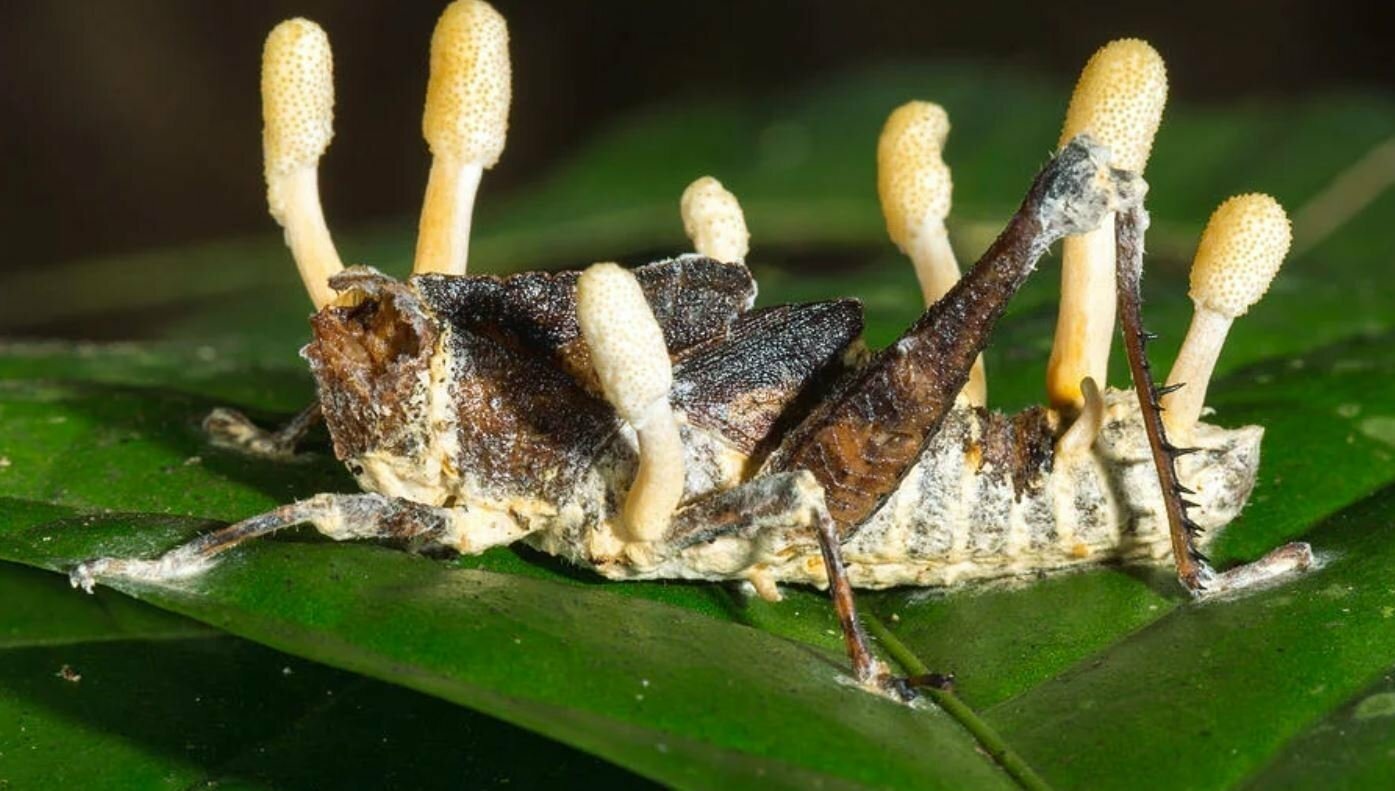
Lion’s Mane Mushroom (Hericium erinaceus)
With its shaggy appearance resembling a lion’s mane, this mushroom is not only unique in its looks but also has a ton of potential health benefits. Lion’s Mane mushrooms are known for their potential cognitive and nerve health benefits, making them a sought-after edible and medicinal fungus. Also, we can’t be the only ones that get strong Dr. Seuss vibes from these.

Octopus Stinkhorn (Clathrus archeri)
Resembling an angry octopus readying to attack, the Octopus Stinkhorn emerges from a gelatinous egg, unfurling into tentacle-like arms covered in a dark, foul-smelling spore mass. This bizarre mushroom is known for its distinct and unappealing odor so just stick to taking a photo and go on your way.
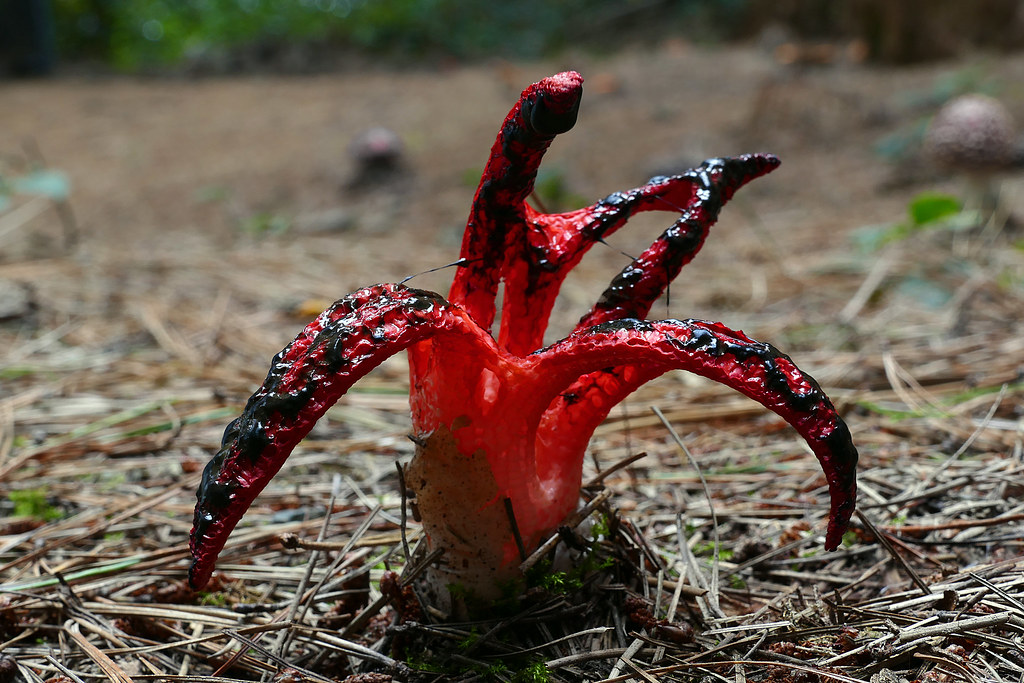
Bleeding Tooth Fungus (Hydnellum peckii)
This one earns its name from the drops of red fluid it secretes, resembling the appearance of “bleeding.” An unusual mushroom that is found in North America and Europe and features spiny teeth-like structures underneath its cap. Gourmands beware as this one is incredibly bitter!
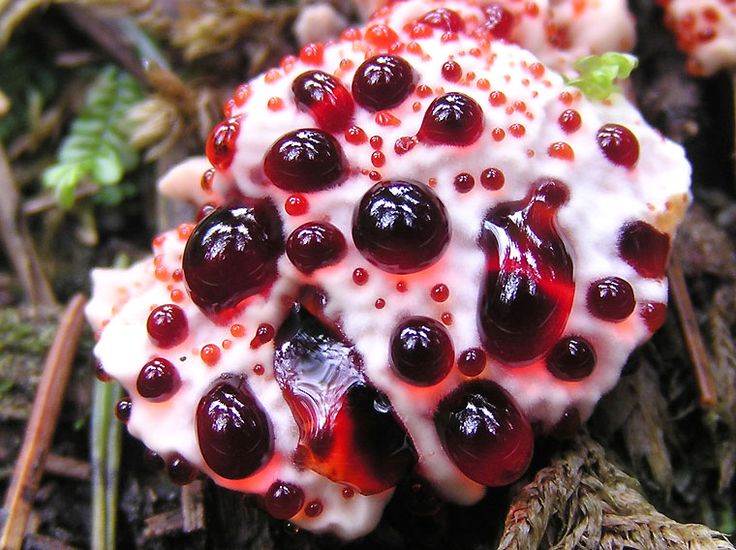
Wrinkled Peach (Rhodotus palmatus)
A small, fan-shaped mushroom with a velvety texture and a peachy-pink hue, the kind of mushroom you would expect to pop up in a fairytale. Found on decaying wood, it adds a touch of color to the forest floor. But it won’t be adding anything to your plate, it tastes like bitter rubber.
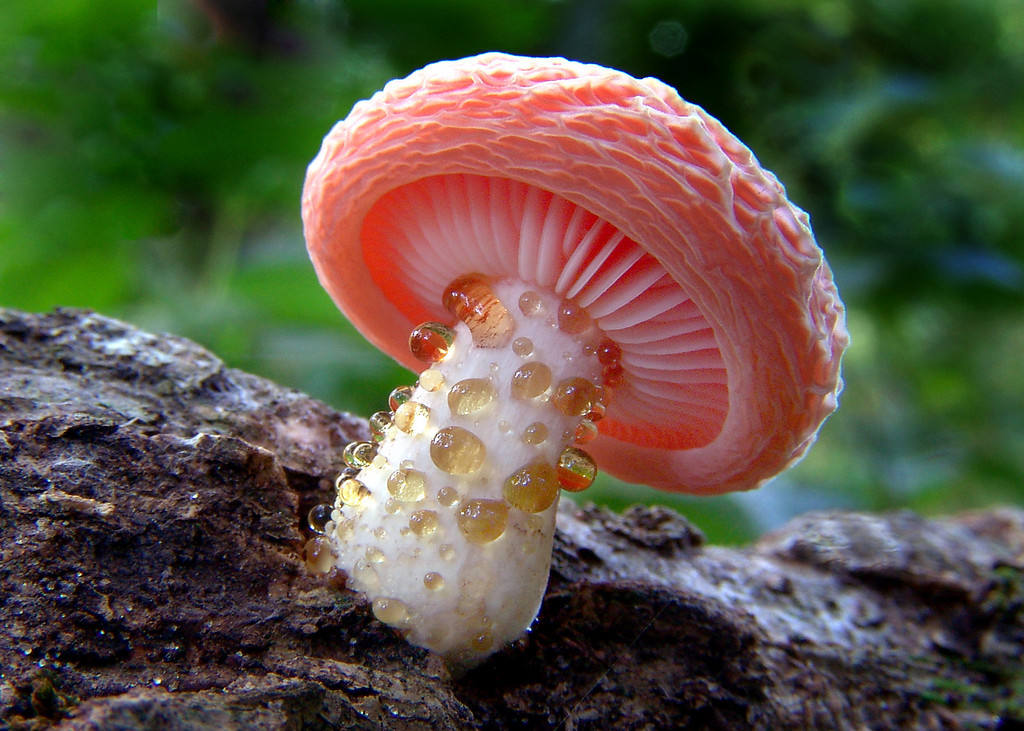
Earthstar Fungi (Geastrales)
Known for their star-like appearance when reaching maturity, this mushroom has a long history of being used as traditional medicines in North America and China. The outer layer of the mushroom splits open, revealing an inner mass of spores held aloft on slender arms. However, this one is yet another mushroom that simply doesn’t taste good.
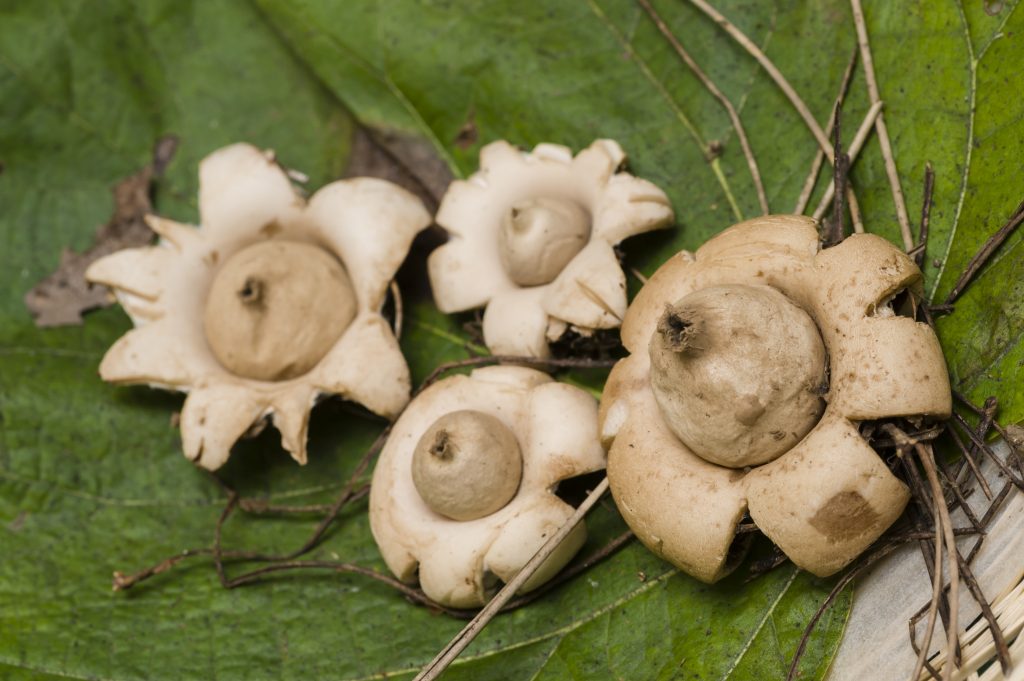
Bird’s Nest Fungi (Nidulariaceae)
Yes, they got their names from the fact that they resemble miniature nests containing “eggs.” These eggs are in charge of releasing spores so they’re not just for show. Raindrops falling into the nest-like cups can cause the “eggs” to be projected out, helping to disperse the spores. Not poisonous but not edible either so yeah, give them a hard pass.
